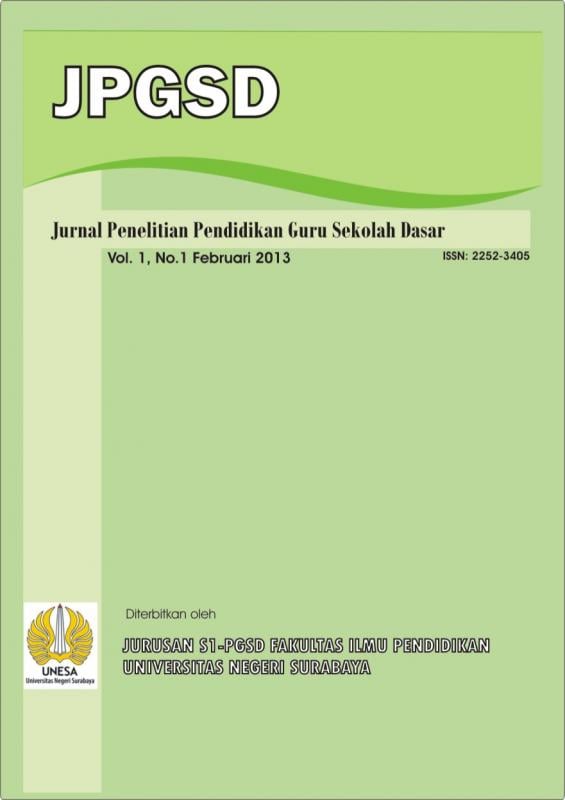ANALISIS MISKONSEPSI SISWA KELAS V UPT SD NEGERI 226 GRESIK PADA MATERI SISTEM PENCERNAAN MANUSIA PEMBELAJARAN IPA SD
Abstract
Abstrak
Penelitian ini bertujuan untuk mendeskripsikan apa saja miskonsepsi yang dialami siswa pada materi sistem pencernaan, faktor, penyebab miskonsepsi, dan upaya mengatasi miskonsepsi siswa kelas V UPT SD Negeri 226 Gresik tidak terjadi secara terus menerus. Metode penelitian ini adalah Mix Methods jenis rancangan Explanatory Design (Rancangan Sekuensial Explanatori). Teknik pengumpulan data yang digunakan berupa tes diagnostik, wawancara, dan observasi. Hasil dari penelitian ini menunjukkan bahwa terdapat siswa yang memiliki tingkat pemahaman paham konsep, miskonsepsi, dan tidak paham konsep. Siswa yang mengalami miskonsepsi tertinggi dengan persentase sebesar 92,30% pada soal nomor 4, faktor penyebab miskonsepsi berasal dari kemampuan siswa yang berbeda, konteks bahasa, buku pelajaran, penggunaan media, dan metode mengajar serta upaya guru kelas VA dalam mengatasi siswa yang miskonsepsi adalah dengan merancang pembelajaran IPA yang inovatif, penggunaan media konkret, memberi soal evaluasi, apabila terdapat siswa yang miskonsepsi maka diterangkan secara berulang-ulang serta menggunakan bahasa sehari-hari yang dimengerti siswa.
Kata Kunci: Konsep IPA, Miskonsepsi, Tes diagnostik.
Abstract
This study aims to describe what are the misconceptions experienced by students regarding the digestive system material, the factors that cause student misconceptions, and efforts to overcome the misconceptions of class V UPT SD Negeri 226 Gresik students do not occur continuously. This research method is Mix Methods type of planExplanatory Design (Explanatory Sequential Design). Data collection techniques used in the form of diagnostic tests, interviews, and observation. The results of this study indicate that there are students who have a level of understanding of concepts, misconceptions, and do not understand concepts. Students who experience the highest misconceptions with a percentage of 92.30% in question number 4, the factors that cause misconceptions come from different student abilities, language contexts, textbooks, use of media, and teaching methods as well as the efforts of VA class teachers in dealing with students with misconceptions are by designing innovative science learning, using concrete media, giving evaluation questions, if there are students who have misconceptions, they explain it repeatedly and use everyday language that students understand.
Keywords: Science concepts, misconceptions, diagnostic tests.
Downloads
 Abstract views: 567
,
Abstract views: 567
, PDF Downloads: 688
PDF Downloads: 688







